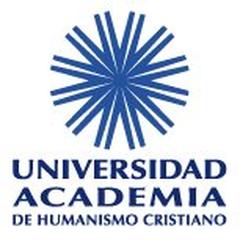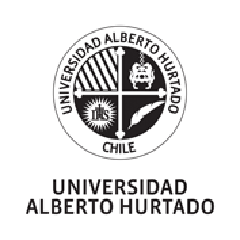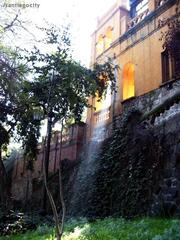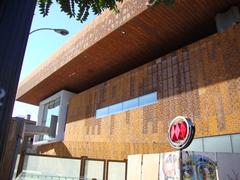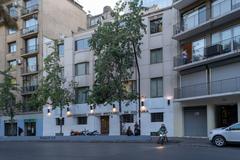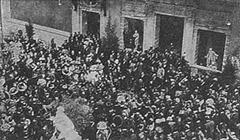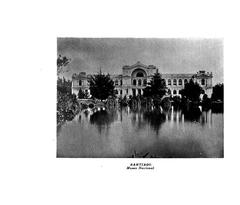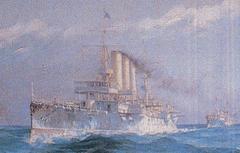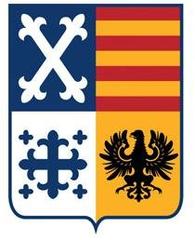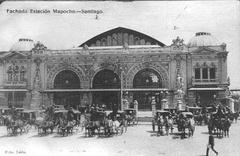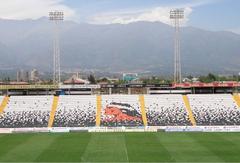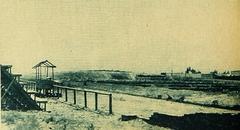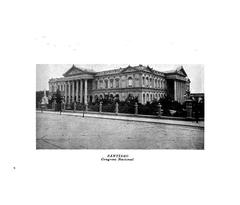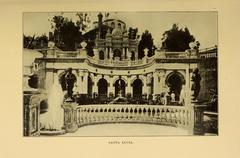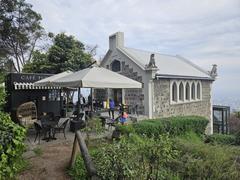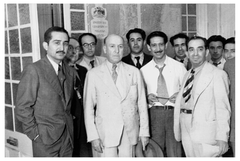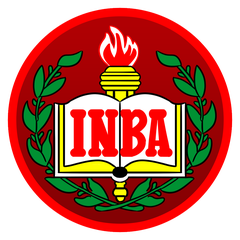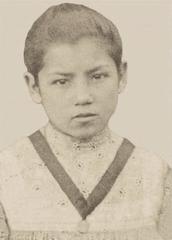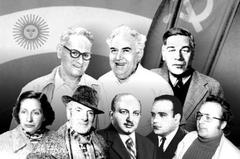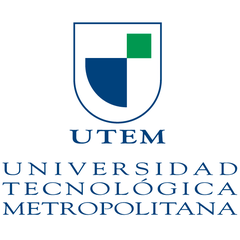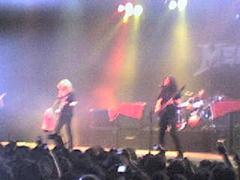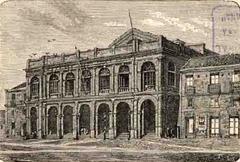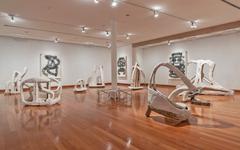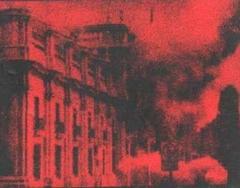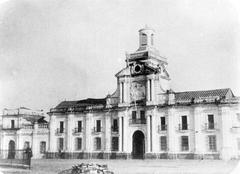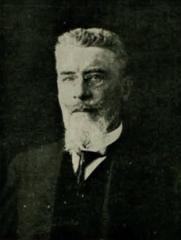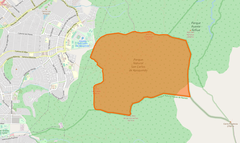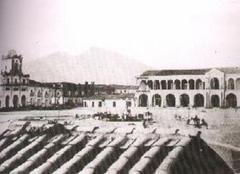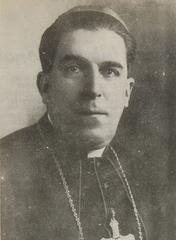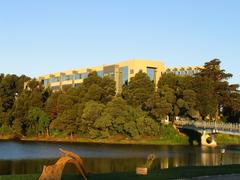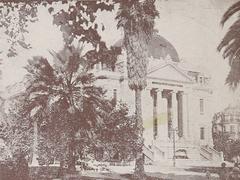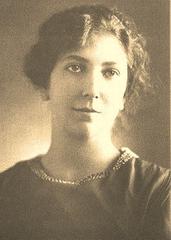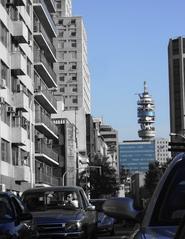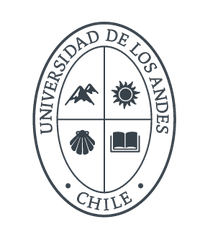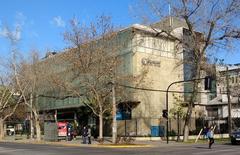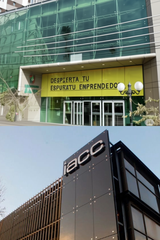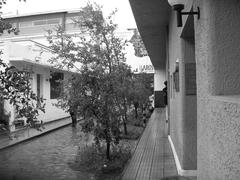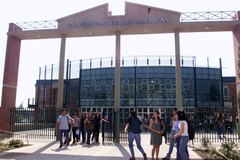Museum Of Chemistry And Pharmacy Of The University Of Chile
Museum of Chemistry and Pharmacy of the University of Chile: Visiting Hours, Tickets, and Historical Significance
Date: 14/06/2025
Introduction
Nestled in the historic center of Santiago, the Museum of Chemistry and Pharmacy of the University of Chile—officially known as “Museo de Química y Farmacia Profesor César Leyton”—is a vital testament to the nation’s scientific progress and cultural legacy. Founded in 1942 as part of the University of Chile’s Faculty of Chemical and Pharmaceutical Sciences, the museum chronicles the evolution of chemistry and pharmacy in the country, preserving unique artifacts and offering dynamic educational opportunities. Whether you are a science enthusiast, student, or curious traveler, this guide details everything you need to know about visiting the museum, including historical highlights, ticketing, visitor amenities, and nearby attractions (University of Chile official site, Santiago Turismo, Santiago Turismo - Museum Profile).
Table of Contents
- Museum Origins and Historical Development
- Collections and Exhibitions
- Educational Role and Public Outreach
- Visitor Information
- Frequently Asked Questions (FAQ)
- Conclusion
- References
Museum Origins and Historical Development
The museum was established to safeguard and interpret the development of chemistry and pharmacy in Chile. Named after Professor César Leyton, a visionary in pharmaceutical sciences, its inception coincided with a period of scientific expansion in the country. Early collections included laboratory instruments, pharmaceutical devices, and archival documents, offering a window into the emergence of scientific practice from colonial-era apothecaries to modern pharmaceutical research. Over subsequent decades, the museum has grown both in scope and in its role as a resource for scholars and the public alike.
Collections and Exhibitions
Permanent Exhibits
The museum’s permanent exhibitions are housed in a neoclassical building and showcase:
- 19th-Century Pharmacy: A faithfully reconstructed Chilean “botica” complete with original woodwork, glass jars, brass scales, and marble mortars.
- Scientific Instruments: Microscopes, balances, spectrometers, glassware, and handwritten laboratory manuals from the 19th and early 20th centuries.
- Pharmaceutical Artifacts: Displays of historic pill-making devices, apothecary jars, early packaging, and botanical specimens used in traditional remedies.
- Rare Books and Manuscripts: Pharmacopoeias, medical treatises, lecture notes, and historical prescriptions, many dating to the 18th century.
- Personal Collections: Medals, diplomas, correspondence, and personal effects from notable Chilean chemists and pharmacists.
- Women in Pharmacy: A dedicated area highlighting the pioneering female graduates of the University of Chile.
Temporary Exhibitions and Interactive Features
Rotating exhibitions focus on topics including anesthesia, synthetic drug development, environmental impacts of pharmaceuticals, and the role of women in science. Interactive displays and hands-on workshops allow visitors to engage with chemical experiments and learn about medicinal plants and vaccine development. The museum also digitizes select materials for virtual exploration.
Educational Role and Public Outreach
The museum serves as an academic resource, collaborating with university departments to integrate its collections into teaching and research. It also provides a broad range of educational programs:
- Guided Tours and Workshops: Available in Spanish and English, these programs cover topics from public health advances to everyday chemistry.
- School Groups and Special Events: The museum welcomes educational groups and participates in city-wide cultural initiatives such as Santiago’s Museum Night.
- Digital Resources: Interactive tours and multimedia content are accessible via the museum website and mobile apps.
Visitor Information
Location and Access
- Address: Merced 50, Santiago, Chile
- Nearby Metro: Bellas Artes (Line 5) and Baquedano (Lines 1 and 5)
- Landmarks: Within walking distance of Plaza de Armas, Parque Forestal, and the National Museum of Fine Arts (Santiago Turismo).
Visiting Hours and Admission
- Tuesday to Thursday: 10:00 a.m. – 6:00 p.m.
- Friday: 10:00 a.m. – 2:00 p.m.
- Closed: Saturday, Sunday, and Monday
- Admission: Free of charge; donations are encouraged to support museum programming.
Guided Tours and Programs
- Availability: Group tours (Spanish and English) by advance arrangement. Booking is recommended for school or special interest groups.
- Workshops: Scheduled periodically; check the museum’s website for upcoming topics.
Facilities and Accessibility
- Reception and Staff: Attendants offer assistance and information in Spanish and English.
- Restrooms: Available on site.
- Accessibility: Generally accessible, with some limitations due to the historic structure. Contact the museum for specific requirements.
- Café/Gift Shop: Not available; plenty of nearby dining options.
COVID-19 Policies
- Protocols: Mask use, hand sanitizer stations, and capacity limits may apply. Check the official website for current guidelines.
Photography Guidelines
- Permitted: Non-flash, personal-use photography is allowed in most areas; observe signage and staff instructions.
Nearby Attractions
- Cultural Sites: Museo Nacional de Bellas Artes, Parque Forestal, Santa Lucia Craft Market (SouthAmerica.cl), Central Market, and Plaza de Armas.
- Dining: Numerous cafés and restaurants within walking distance.
Virtual Resources
- Virtual Tour: Available online via the museum’s website.
- Maps and Directions: Accessible on the Santiago Metro Map.
Frequently Asked Questions (FAQ)
Q: What are the museum’s opening hours?
A: Tuesday to Thursday 10:00 a.m. – 6:00 p.m., Friday 10:00 a.m. – 2:00 p.m.; closed Saturday, Sunday, and Monday.
Q: Is there an admission fee?
A: Admission is free; donations are appreciated.
Q: Are guided tours available?
A: Yes, by prior arrangement (Spanish and English).
Q: Is the museum accessible for people with disabilities?
A: Generally accessible; contact staff for specific needs.
Q: Can I take photos inside the museum?
A: Yes, non-flash photography for personal use is permitted in most areas.
Conclusion
The Museum of Chemistry and Pharmacy of the University of Chile offers an enlightening journey through the nation’s scientific and cultural development. Its diverse collections, educational initiatives, and central location make it a standout among Santiago’s historical and academic sites. Whether you are drawn by the meticulously recreated 19th-century pharmacy, the rare manuscripts, or the stories of scientific pioneers, a visit to this museum is both informative and inspiring. Make the most of your experience by checking the latest hours, booking a guided tour, and pairing your visit with nearby attractions. For up-to-date information and virtual resources, consult the museum’s official channels.
References
- Santiago Turismo: Museums in Santiago
- University of Chile: Museo de Química y Farmacia
- Santiago Turismo: Museum of Chemistry and Pharmacy Profile
